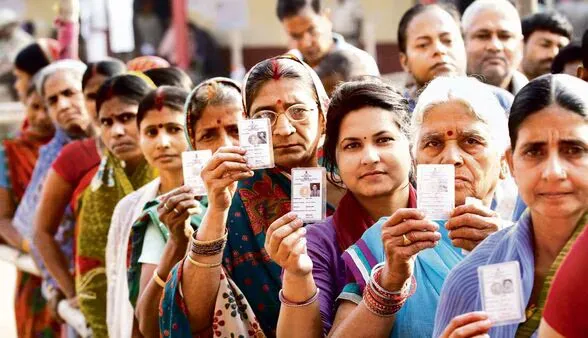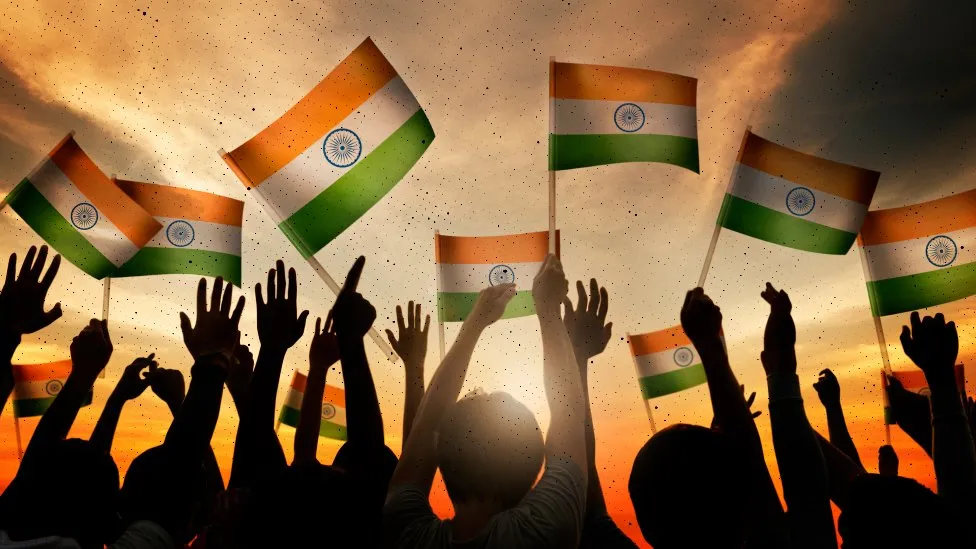Regardless of whether one is in agreement with a certain bearded national leader’s long march across the country or not, it is generally acknowledged that Indian society today is more polarised and divided than it was a decade or two ago. Most reasonable people across the political spectrum also agree that it is in the larger social and economic interest of the country to reduce identity polarisation and strive for a more harmonious society. It is then important to understand the incentives that shape such behaviour in our politics and endeavour to minimise or eliminate them.
How we elect our leaders is at the root of such travails. India’s current electoral method of choosing one candidate or political party from a menu of choices on the ballot is incompatible with the vast and complex diversity of the nation. In the current system called ‘first-past-the-post’ (FPTP), any candidate with a simple majority is declared the winner. This has resulted in a perverse incentive for parties and candidates to secure a certain minimum share of the votes and focus more on dividing others’ votes. This system does not penalise a party or a candidate from overtly antagonising a section of voters in order to secure another section’s votes. Given India’s inherent deep identity cleavages, its electoral system must encourage and incentivise political parties to woo every section of society and not reward them for shunning certain sections.
What’s the alternative then?
Would this change how you vote? Would this change how we choose winners? Would this produce different incentives for our politics?
Let’s say there are three parties A, B, and C competing in an election in a constituency that has a sizeable number of both Dalits and dominant caste voters. Party A promises to represent only Dalits, is antagonistic to the dominant castes and promises a socialist economics. Party B represents only ‘upper’ castes, is antagonistic to Dalits and adopts a libertarian economic policy. Party C is neutral in identity representation and espouses welfare economics.
There may be some ‘upper’ caste voters who support welfare economics and are against the idea of being antagonistic to Dalits. Both parties B and C are acceptable to these voters. There may be some Dalit voters who do not like socialism and for whom parties A and C may be acceptable. In this system, by virtue of not being antagonistic to any section of voters, party C may emerge as a potential winner with the most ‘tick marks’. Whereas, in the current FPTP system, voters with nuanced priorities are forced to vote for just one party that may not fully represent their entire set of preferences.
This system is called Approval Voting, which is a well-researched voting methodology that is used in the United Nations, in internal primaries of many political parties in the US, and occasionally in the election of the Pope at the Vatican. It is generally preferred as a voting method in situations where the number of candidates are many, the electorate is very diverse and fragmented and there is a strong desire to reduce disharmony in elections.

‘Approval voting’ benefits India
Approval voting drives parties and candidates towards a consensus centre, in contrast to the current FPTP system that encourages parties to move to the extremes and win elections with a smaller share of overall public support. Voters may have a preferred choice, an acceptable choice and a completely unacceptable choice. In approval voting, the party that is the most preferred and acceptable wins while the most hated party is kept out. To put it simply, approval voting will make political parties strive to be less hated among the public even if they are not the most loved. Which is what a diverse, multi-party democracy such as India needs.
Approval voting can also reduce the prevalent politics of fear in which voters feel compelled to vote for the likely winner, which the majority supports, for fear of retribution post the election. This leads to a bandwagon effect of people voting under fear for a deemed winner. In approval voting, it is much more difficult to gauge a likely winner before the election since people have more than one choice. This can help reduce the politics of fear and encourage truer voting.
Approval voting is irrelevant in a two-party democracy, which is the reason why it is not in vogue. But in a democracy like India, which had 671 political parties in the 2019 Lok Sabha election, approval voting can be a powerful way to reduce fragmentation, drive political parties to be more inclusive and coalesce around a consensus in policies and promises. Approval voting shifts the balance of power to the voter. Since technically every party can get a vote from the same voter, more voters will be wooed and fewer will be shunned in entirety. It is also simple and easy for the average Indian voter to just tick all parties that she wants to vote for rather than follow a complicated system of ranking or scoring each candidate on the ballot. The eventual winner through an approval voting method will likely be more acceptable to all than one that wins even when the majority of voters hate that party vehemently.
Communist parties such as the CPI and CPM in India have been arguing for a switch to proportional representation method of voting under which political parties will be given representation in legislature based on votes they receive and not on the number of seats they win. They argue that this will give adequate representation to all sections of society. But this would also encourage further fragmentation of the electorate as more political parties will emerge claiming to represent various subdivisions such as, say, a specific section even within the Dalit community or transgenders and so on. The imminent need for India’s politics is parties that do not divide society further on smaller identity subdivisions but those that are rewarded for being more inclusive of all sections.
It took a decade for India to adopt NOTA, which is a mere symbolic option of registering one’s disenchantment with the state of politics. MOTA, which is a mirror image of NOTA, can be much more significant in its impact by altering the incentives for political parties and forcing them to seek votes of all rather than just a few. The philosophical idea that underpins approval voting is one of ‘let not the perfect become the enemy of the good’ because it is likely to produce an acceptable party to many voters as the winner than the most preferred party for a smaller group of voters. Perhaps, this is one area where polygamy (voters can choose many candidates) can prove beneficial for Indian society.
